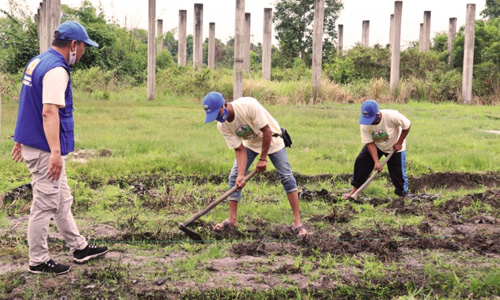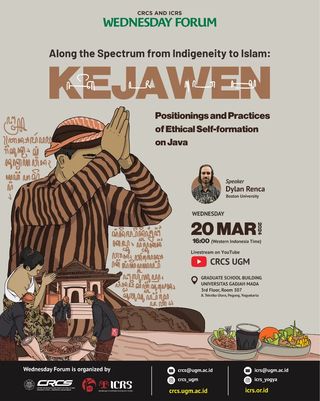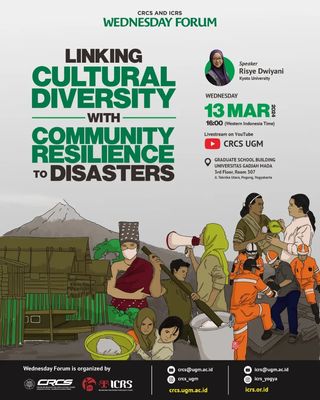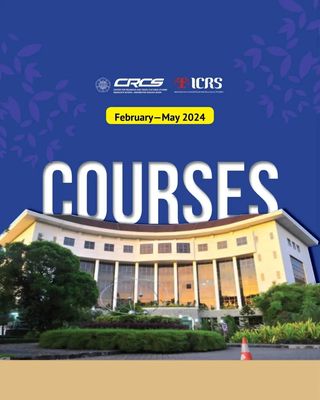
Photo source: brg.go.id
In collaboration with the Ministry of Religion and the Peatland Restoration Agency, ICRS conducted a training for dozens of religious instructors from Sumatra and Kalimantan regarding the environmental crisis, particularly focused on peatland restoration. This training was held online in four sessions during November 2020. In the second training session which was held on November 19, 2020, Zainal Abidin Bagir—the director of the Indonesian Consortium for Religious Studies, Gadjah Mada University as well as speaker at this forum—conveyed how religion is discussed in environmental issues. In his presentation "Religion and Environmental Recovery", he elucidated three important points including the arrival of the Anthropocene era, the effort to involve religion in the environmental crisis management, and the role religion can take in ecological restoration.
According to Dr. Bagir, the world is entering a new geological era controlled by humans. This era is known as the Anthropocene which began in the 20th century. Its appearance is marked by drastic changes caused by humankind that have contributed to the environmental crisis. The symptoms cover the extinction of flora and fauna, pollution of the sea due to microplastic particles, desertification in which once fertile land has turned into an unproductive desert, air pollution due to fuel use and fossils, and climate change.
Though the world citizens have been aware of the environmental crisis since the 1950s, the idea of involving religion in handling the environmental crisis only gained strength around the 1990s. In January 1990, Carl Sagan led a group of scientists to draft and sign an open letter urging action on the global environmental crisis. The letter was titled “Preserving and Cherishing the Earth: An Appeal for Joint Commitment in Science and Religion” and stated, "Problems of such magnitude, and solutions demanding so broad a perspective must be recognized from the outset as having a religious as well as a scientific dimension. Mindful of our common responsibility, we scientists—many of us long engaged in combating the environmental crisis—urgently appeal to the world religious community to commit, in word and deed, and as boldly as is required, to preserve the environment of the Earth.” This idea was considered significant due to the long historical antagonism between science and religion. These scientists understand that science alone is not sufficient to solve the environmental crisis as it is often rooted in moral and lifestyle problems.
A year later, in June 1991, religious clerics accepted the scientific group's call to carry out their prophetic responsibility in saving the environment. In their address to respond to the urging, they said they accept a prophetic responsibility to make people aware of natural destruction. For them, the mission of environmental safeguards and environmental justice must occupy the most important concern for religious people.
Referring to the idea of preserving nature by Vasudha Narayanan, a Hindu scholar, Bagir explained that the current environmental crisis can be overcome with 3T; text, temple, teacher. Text means scriptures or teachings as the source of philosophy and ethics through which the values of nature conservation are explored and practiced. Temple can be understood as a religious community (houses of worship and religious institutions) which become a means of effective mobilization of social change. And the last one is teacher, namely religious leaders who encourage religious communities to be involved in the environmental conservation movement.
As an effort to restore nature, Bagir mentioned the need for "ecological conversion" as called by Pope Francis. The existence of the Anthropocene, or natural damage caused by human activities, is an ecological sin for the world community today. So people must repent through ecological conversion. It necessitates a change in attitude and the need to build environmental ethics through re-excavating religious texts that emphasize respect for nature, equality of human and non-human beings, human responsibility for God's creation, and the need to revive traditions to address current problems.
During the training, the religious educators were invited to rethink the role of religion in saving the environment. In addition to listening to the material as a context, the participants were asked to formulate environmental ethics that were derived from various religious teachings. Even though the religious educators involved in this training are all under the auspices of the official religion, Bagir urged the need to involve indigenous groups in the environmental conservation movement considering their role in protecting nature is quite significant.









